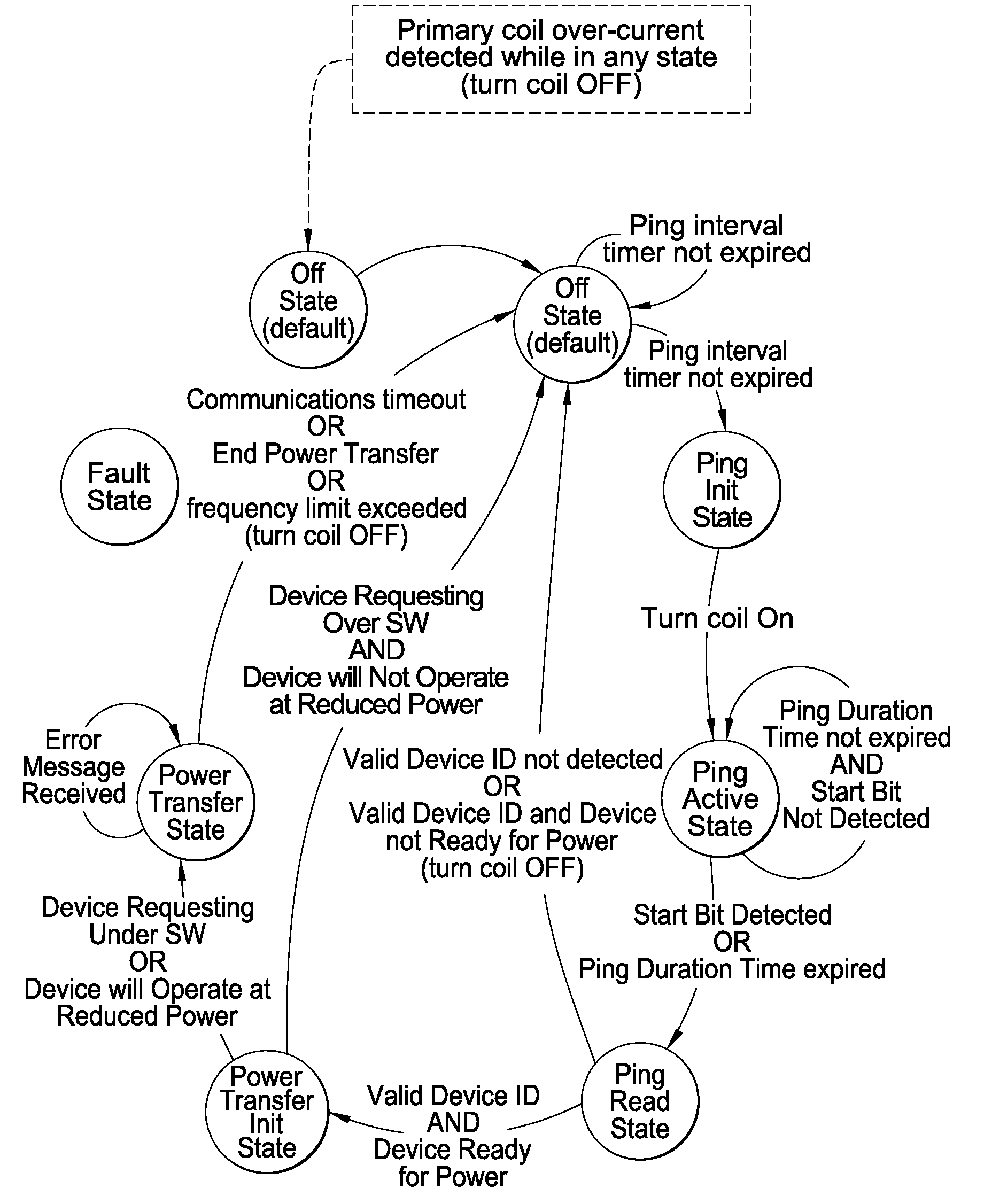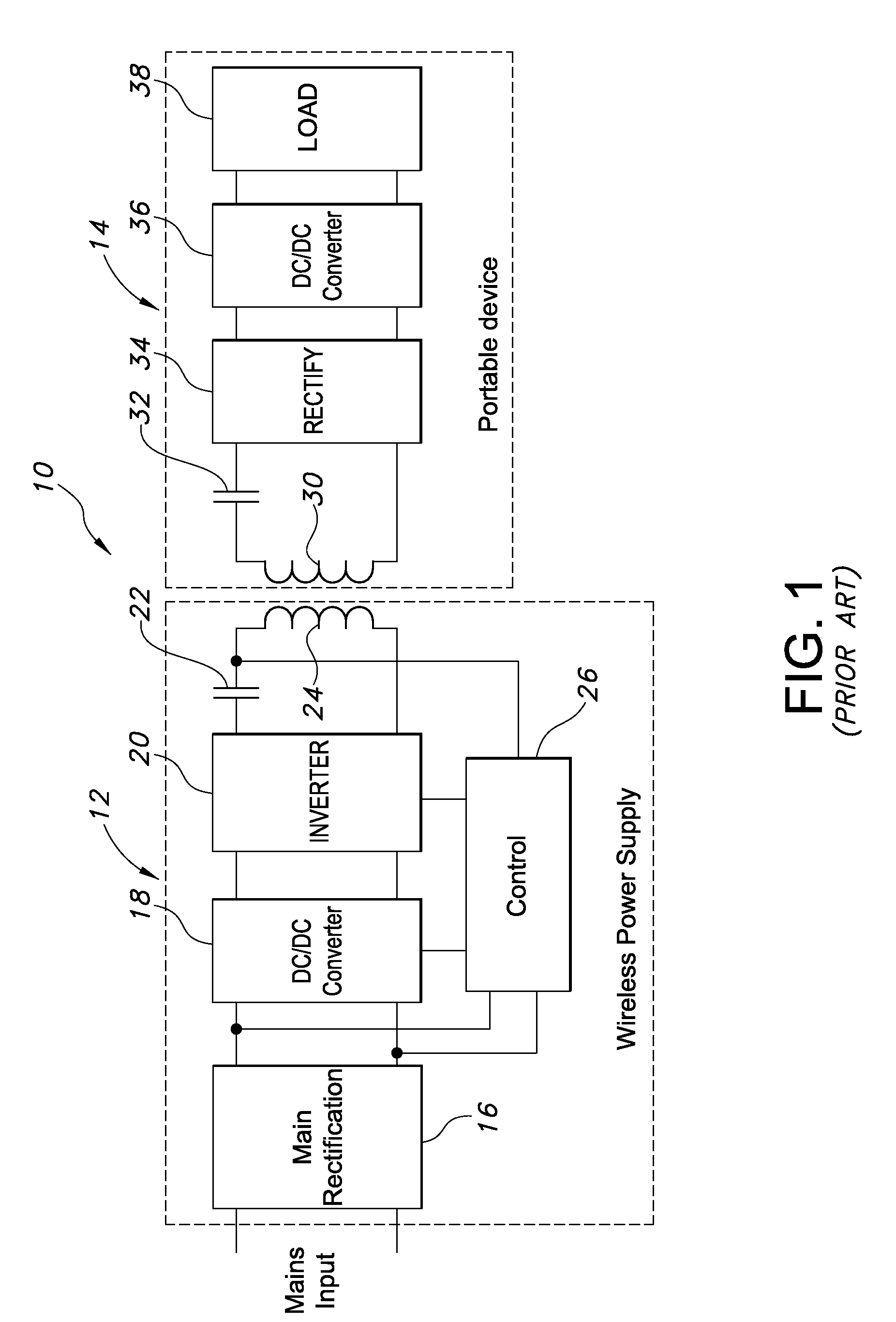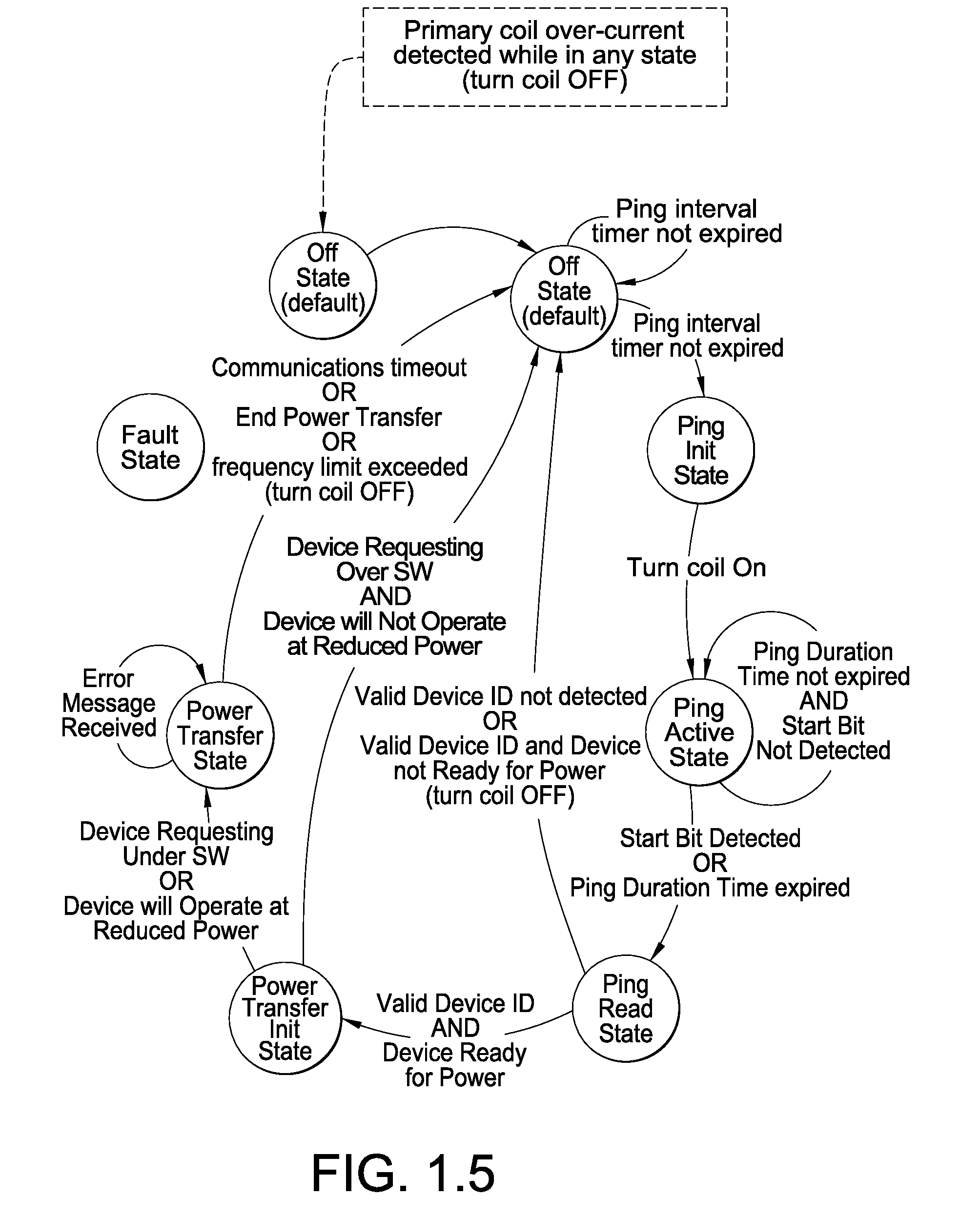Wireless charging system with device power compliance
- Summary
- Abstract
- Description
- Claims
- Application Information
AI Technical Summary
Benefits of technology
Problems solved by technology
Method used
Image
Examples
Embodiment Construction
[0032]A prior art wireless charging system 10 is illustrated in FIG. 1 and includes a wireless power supply (WPS) 12 and a portable secondary device 14. The wireless power supply 12 in turn includes a rectifier 16, a DC / DC converter 18, an inverter 20, a capacitor 22, an inductive coil 24, and a control 26. The portable device 14 includes a secondary coil 30, a capacitor 32, a rectifier 34, a DC / DC converter 36, and a load 38. When the secondary coil 30 is brought into proximity to the primary coil 24, and when the primary coil is powered, an inductive link is established; and a voltage is induced in the secondary coil. The wireless charging system 10 as thus far described is well known and its structure and function need not be further described in detail.
[0033]Power systems such as that illustrated in FIG. 1 typically require the user to understand and remember what devices and what power supplies work together. Two different power supplies with different power capacities, but als...
PUM
 Login to View More
Login to View More Abstract
Description
Claims
Application Information
 Login to View More
Login to View More - R&D
- Intellectual Property
- Life Sciences
- Materials
- Tech Scout
- Unparalleled Data Quality
- Higher Quality Content
- 60% Fewer Hallucinations
Browse by: Latest US Patents, China's latest patents, Technical Efficacy Thesaurus, Application Domain, Technology Topic, Popular Technical Reports.
© 2025 PatSnap. All rights reserved.Legal|Privacy policy|Modern Slavery Act Transparency Statement|Sitemap|About US| Contact US: help@patsnap.com



